¶ Introduction
A procedure has been adopted for any light aircraft approaching to land at an airfield. This procedure is joining the standard aerodrome traffic circuit and is adopted by convention rather than laid down by regulation. There is no standardized manner to join the aerodrome circuit. This document will present you a basic integration manner extracted from several countries regulations all around the world.
The circuit requires that an aircraft should track over at least three legs of a rectangular course aligned with the runway or landing strip which is most into-wind, except when the air traffic controller gives a straight-in approach or an indirect approach clearance.
These 3 legs are:
- Downwind leg
- Base leg
- Final leg
The reader of this document must know the basics of an aerodrome circuit construction.
¶ Basic security rules
Operating on and in the vicinity of an aerodrome requires the pilot to observe other traffic for the purpose of avoiding collision and, unless instructed by ATC, conform with or avoid the aerodrome traffic circuit formed by other aircraft.
The standard overhead joining procedure is a recommended means of complying with this rule, by being 500 feet to 1000ft above aerodrome traffic pattern altitude and then sequencing appropriately.
Pay attention that some national regulations require 500ft minimum but others shall require 1000ft minimum above aerodrome traffic circuit. Please consult you national regulations in order to have the adequate altitude.
This procedure gives the opportunity to carefully check the airfield area, the air sock and boundaries for hazards -animals, power lines and other wires, ditches, obstructions - and to ascertain the whereabouts of other traffic in, or joining, the circuit and to be seen by them.
If the circuit altitude is not published, or not known by the pilot, the pilot must take 1000ft AGL as standard altitude for his aerodrome circuit.
¶ Joining the circuit on non-controlled airfield
¶ Aircraft arriving at the opposite side of the circuit -- standard
In this configuration, the pilot is at the opposite side of the circuit pattern and flies directly overhead the runway or airfield; he will cross the runway axis before the circuit. Remind you that the altitude taken must be 500 to 1000 feet above aerodrome traffic circuit altitude (take 1500ft AGL as traffic circuit altitude if there is no published pattern altitude).
When overhead, the pilot shall not join the downwind directly. The pilot must do a 180° turn outside the runway if possible, and then follows a parallel track outside the runway axis and at the opposite side of the circuit in order to let traffic perform their flight in the aerodrome circuit.
When the runway is behind the aircraft and in function of nearby traffic in the circuit, the pilot must descend to the aerodrome circuit altitude in function of traffic and can join the beginning of the downwind leg.
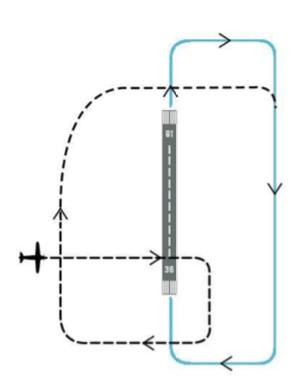
¶ Aircraft arriving at the opposite side of the circuit -- 45° procedure
In this configuration, the pilot is at the opposite side of the circuit pattern and flies directly overhead the runway or airfield; he will cross the runway axis before the circuit. Remind you that the altitude taken must be 500 to 1000 feet above aerodrome traffic pattern altitude or 1500ft AGL if there is no published pattern altitude.
When overhead, the pilot shall not join the downwind directly. The pilot must do a 45° turn inside the aerodrome circuit in order to let traffic perform their flight in the aerodrome circuit. The 45° turn must be done in the direction of the beginning of the downwind leg.
When the beginning of the downwind leg is behind the aircraft and in function of nearby traffic in the circuit, the pilot must descend to the aerodrome circuit altitude in function of traffic and can join the beginning or the middle of the downwind leg.
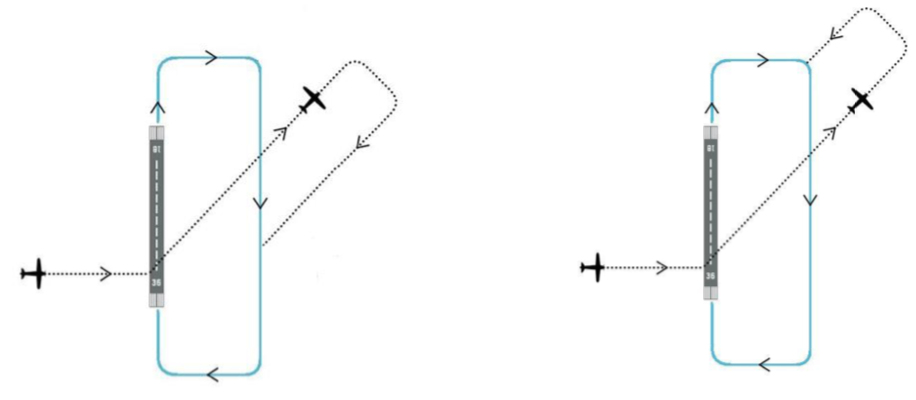
¶ Aircraft inside of the circuit before airfield overhead -- standard
In this configuration, the pilot will join the overhead inside the circuit pattern and flies directly overhead the runway or airfield. Remind you that the altitude taken must be 500 to 1000 feet above aerodrome traffic pattern altitude or 1500ft AGL if there is no published pattern altitude.
When overhead, the pilot shall not join the downwind directly. The pilot must do a 90° turn outside the runway if possible, and then follows a parallel track outside the runway axis and at the opposite side of the circuit in order to let traffic perform their flight in the aerodrome circuit.
When the runway is behind the aircraft and in function of nearby traffic in the circuit, the pilot must descend to the aerodrome circuit altitude in function of traffic and can now join the beginning of the downwind leg.
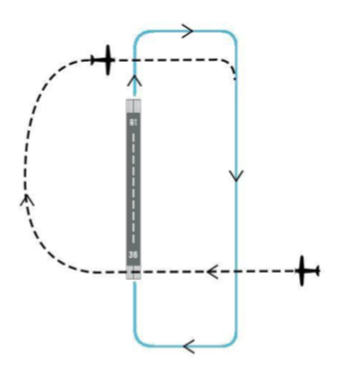
¶ Aircraft inside of the circuit before airfield overhead -- 45°/90° procedure
The runway is in front of the aircraft and in function of nearby traffic in the circuit, the pilot must descend to the aerodrome circuit altitude in function of traffic and can now join the middle of the downwind. The integration can be at the middle of the downwind using a 45° or 90° angle.
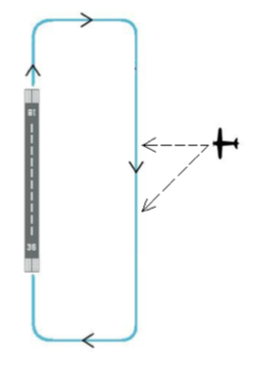
This 45° integration type can be the default integration manner in some countries (like in the USA).
¶ Joining the circuit at controlled airfields
At controlled airfields, the pilot should follow the instructions of the air traffic controller.
As a pilot, you must call the air traffic controller 2 minutes before joining the aerodrome circuit. The air traffic controller can instruct you to join the aerodrome circuit everywhere even if not published.
The air traffic controller can give you one of the integration solutions shown on the image below.
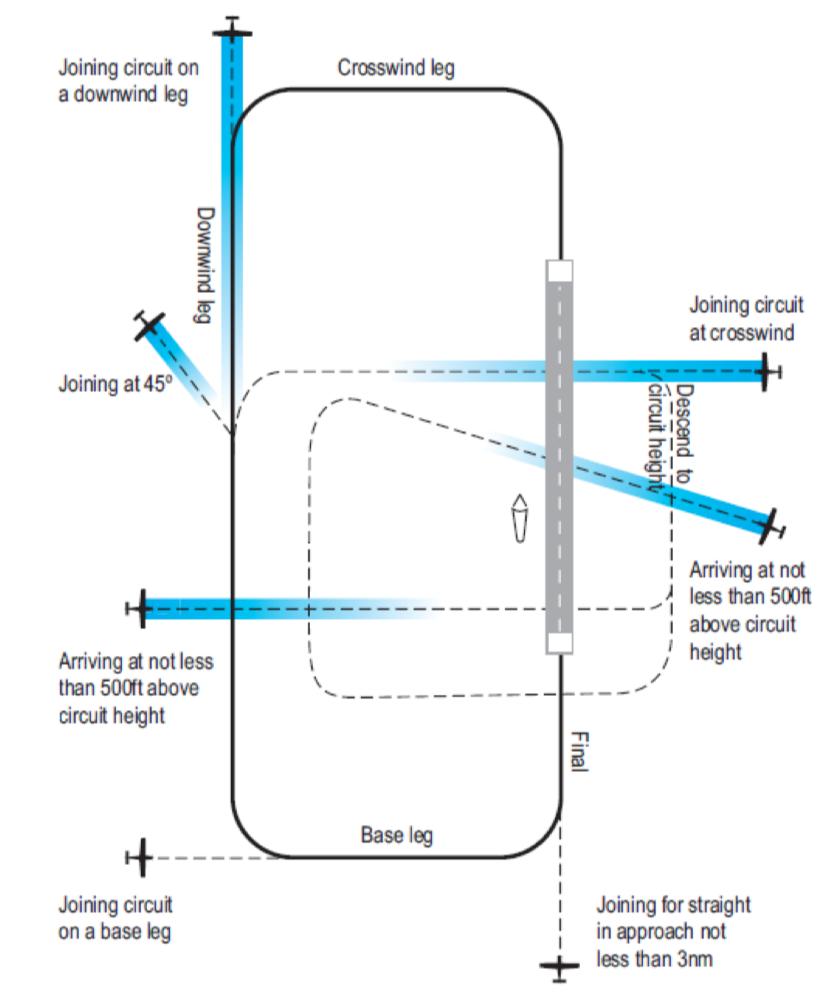
- None
- None
- VID 150259 - Creation
- VID 450012 - Wiki Integration
- VID 496402 - Wiki.js integration